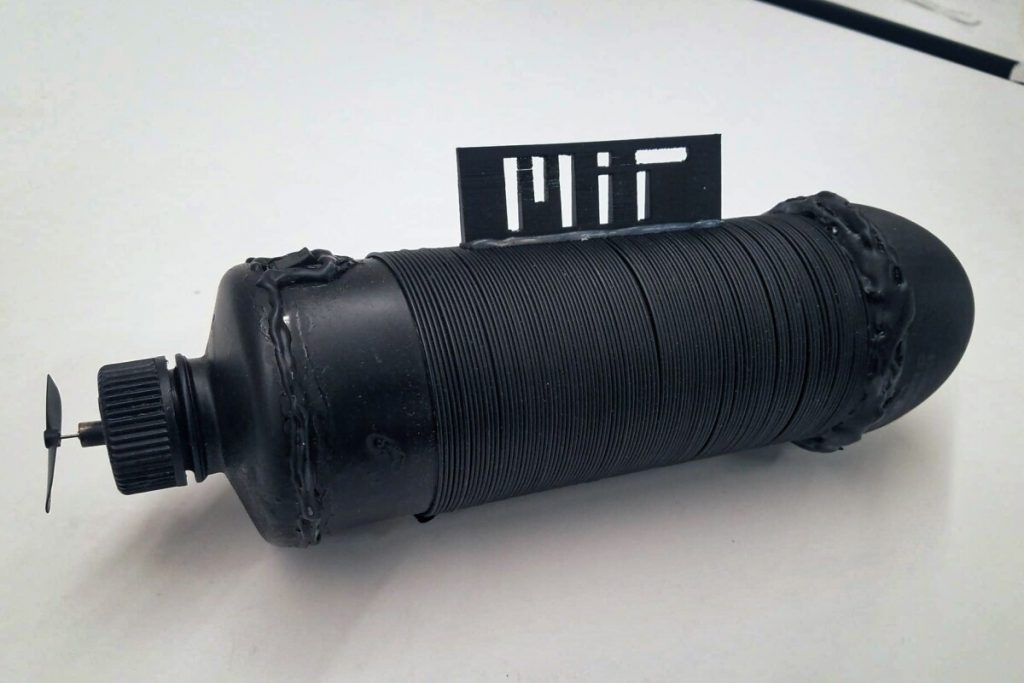
Engineering students who were researching upon a rechargeable lithium-ion battery in the form of an ultra-long fiber that could be woven into fabrics. The battery could enable a wide variety of wearable electronic devices, and might even be used to make 3D-printed batteries in virtually any shape. They have contemplated new possibilities for self-powered communications, sensing, and computational devices that could be worn like ordinary clothing, as well as devices whose batteries could also double as structural parts.
This unique fiber battery is manufactured using novel battery gels and a standard fiber-drawing system that starts with a larger cylinder containing all the components and then heats it to just below its melting point. The material is drawn through a narrow opening to compress all the parts to a fraction of their original diameter while maintaining all the original arrangement of parts.
To prove their hypothesis, the team behind the new battery technology has produced the world's longest flexible fiber battery, 140 meters long, to demonstrate that the material can be manufactured to arbitrarily long lengths. MIT postdoc Tural Khudiyev (now an assistant professor at the National University of Singapore), former MIT postdoc Jung Tae Lee (now a professor at Kyung Hee University), and Benjamin Grena SM '13, Ph.D. '17 (currently at Apple) are the lead authors on the research paper. Other co-authors are MIT professors Yoel Fink, Ju Li, and John Joannopoulos, and seven others at MIT and elsewhere. These researchers, including members of this team, have previously demonstrated fibers that contain a wide variety of electronic components, including light-emitting diodes (LEDs), photosensors, communications, and digital systems. Many of these are weavable and washable, making them practical for use in wearable products, but all have so far relied on an external power source. Now, this fiber battery, which is also weavable and washable, could enable such devices to be completely self-contained.
Various people of the same field have attempted to make batteries in fiber form, Khudiyev says, those were structured with key materials on the outside of the fiber, whereas this system embeds the lithium and other materials inside the fiber, with a protective outside coating, thus directly making this version stable and waterproof. This is the first demonstration of a sub-kilometer-long fiber battery which is both sufficiently long and highly durable to have practical applications, he says. He also mentioned that "when we embed the active materials inside the fiber, that means sensitive battery components already have a good sealing and all the active materials are very well-integrated, so they don't change their position" during the drawing process. In addition, the resulting fiber battery is much thinner and more flexible yielding an aspect ratio, that is the length-to-width fraction, up to a million, which is way beyond other designs, which makes it practical to use standard weaving equipment to create fabrics that incorporate the batteries as well as electronic systems.
Lee says, "the beauty of our approach is that we can embed multiple devices in an individual fiber, and unlike other approaches which need integration of multiple fiber devices." They demonstrated the integration of LED and Li-ion batteries in a single fiber and he believes more than three or four devices can be combined in such a small space in the future. "When we integrate these fibers containing multi-devices, the aggregate will advance the realization of a compact fabric computer." To demonstrate this capability, a toy submarine was wrapped with battery fiber to provide it with power. Incorporating the power source into the structure of such devices could lower the overall weight and so improve the efficiency and range they can achieve.
This team of engineers has already applied for a patent on the process and continues to develop further improvements in power capacity and variations on the materials used to improve efficiency. Khudiyev says such fiber batteries could be ready for use in commercial products within a few years. It was supported by the MIT MRSEC program of the National Science Foundation, the U.S. Army Research Laboratory through the Institute for Soldier Nanotechnologies, the National Science Foundation graduate research fellowship program, and the National Research Foundation of Korea.







